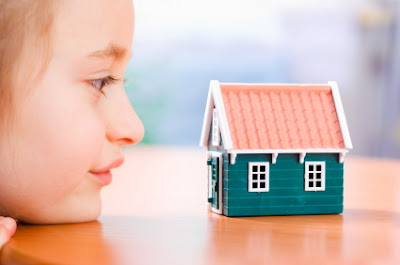Play and therapy
Play is usually identified as something
recreational, fun and participative. Using play in learning is a challenging
and innovative method to mitigate personal change. Play therapy is a form of
counseling or psychotherapy that uses play to communicate with and help people,
especially children, and it helps to prevent or resolve psycho-social
challenges. Because children cannot express themselves the way we adults can,
the use of play is thought to help them towards better social integration,
growth and development. Play therapy is generally employed with children aged 3
through 11 and provides a way for them to express their experiences and
feelings in a natural and non-threatening manner which does not intimidate them.
As children’s experiences and knowledge are often communicated through play, it
becomes an important vehicle that helps them to know and accept themselves as
well as those around them.
A play therapist observes a child playing
with toys (play-houses, pets, dolls, puppets, etc.) to determine the cause of
the disturbed behavior. The objects chosen by the child and the various patterns
of play, as well as the willingness to interact with the therapist, can be used
to understand the underlying cause for the child’s behavior troubles both with
the therapist in the session, as well as
outside, in his own surrounding. The issues easily identified here are:
- Anxiety
- Aggression
- Sexual abuse
- Gender confusion
- Unexpressed anger
- Relationship troubles
Play therapy can be non-directive or
directive depending on the instructions offered to children during the process.
Children have a barrage of unresolved
conflicts that require them to work toward their own solutions through play, preferably
with minimal input from the outside. Although it may not seem too obvious,
children are capable of insight and have stepwise moral development albeit it
maybe at a different pace in different children. Enabling children to modify
behavior through play is an effective strategy to get the best outcome with the
children’s and parents intent in complete synchrony.
Non-directive play therapy
This is guided by the notion that if given a
chance to speak and play freely under a safe and comfortable environment,
troubled children and adolescents will be able to resolve their own problems
and work toward their own solutions. Non-directive play therapy has few strict
rules and conditions and therefore can be used at any age. The use of toys,
human characters, animals, dolls, hand puppets, crayons, cars, water, sand,
jellies, blackboards etc. is a common feature of this kind of approach. It is believed
(and documented with evidence), that children are better able to express their
feelings toward themselves and their environment through these than by verbalization.
By unrestricted self-expression children can experience a passionate release of
their suppressed emotions, gain insight into their sub-conscious thoughts, and test their own reality (catharsis). Toys like these
are more likely to encourage dramatic play and children can easily associate
with them, both of which are important in outward expression.
Directive Play Therapy
This has more structure and guidance by the
therapist as children work through emotional and behavioral difficulties
through play. The process includes more prompting and direction by the
therapist as it is believed to mitigate a quicker change in the child’s
behavior. Therapists may use several techniques to involve the child, such as
engaging in play with the child themselves or suggesting new topics instead of
letting the child direct the conversation. Stories read by directive therapists
are more likely to have an underlying purpose, and therapists are more likely
to create interpretations of stories that children tell. In directive therapy
games are generally chosen for the child, and children are given themes and
character profiles when engaging in doll or puppet activities. This therapy
still leaves room for free expression by the child, but it is more structured, orderly
and methodical.
Play therapy:
Play on come on,
If you like what you do,
And you choose to be true,
It teaches you something new...


No comments:
Post a Comment